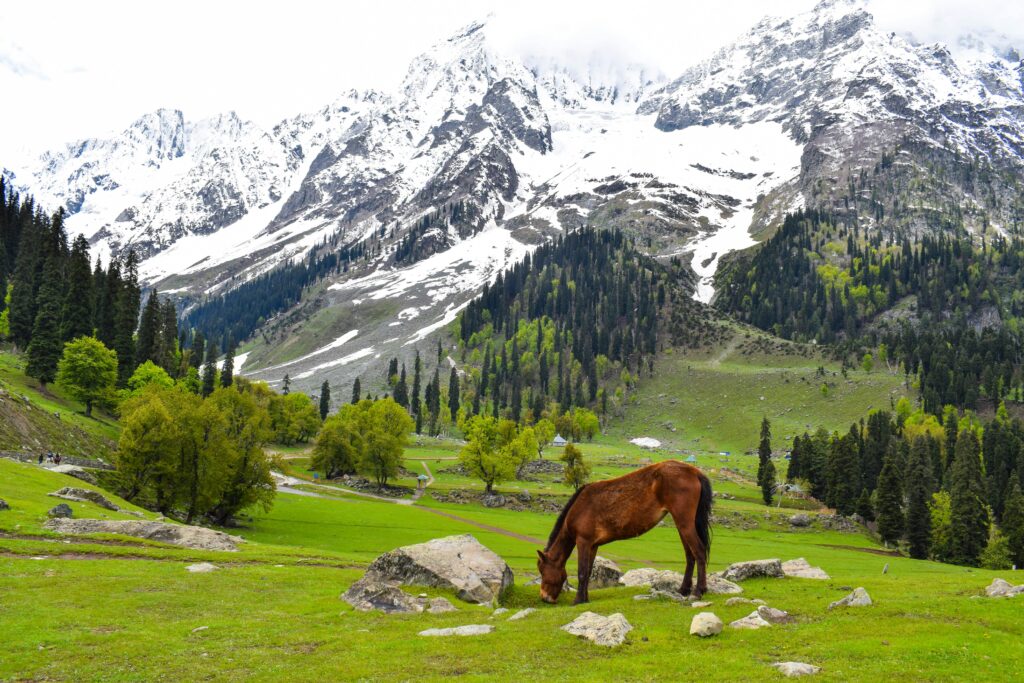
Perched in the northernmost reaches of India, Ladakh Tourism offers a surreal blend of dramatic landscapes, ancient monasteries, and thrilling adventures. Often called “The Land of High Passes,” Ladakh is a dream destination for travelers seeking raw beauty, spiritual depth, and cultural richness.
Why Ladakh Tourism Is So Unique
Ladakh Tourism stands apart for its stark yet stunning terrain, vibrant Tibetan-Buddhist culture, and unmatched serenity. Whether you’re riding through mountain passes, meditating in centuries-old gompas, or camping under a sky full of stars, Ladakh promises an experience that’s both humbling and exhilarating.
Highlights of Ladakh
- Home to some of the world’s highest motorable roads.
- Rich fusion of Indian, Tibetan, and Central Asian cultures.
- Eco-conscious tourism with a focus on sustainability.
- A paradise for photographers, bikers, trekkers, and spiritual seekers.
Top Destinations That Define Ladakh Tourism
Let’s explore the most iconic and soul-stirring places that make Ladakh Tourism unforgettable.
1. Leh: The Gateway to Ladakh
Leh is the cultural and logistical heart of Ladakh Tourism. Key attractions include:
- Leh Palace: A 17th-century palace offering panoramic views.
- Shanti Stupa: A white-domed monument symbolizing peace.
- Main Bazaar: Ideal for shopping pashmina, prayer flags, and handicrafts.
- Sankar Gompa: A peaceful monastery near the city center.
2. Pangong Lake: A Shimmering Marvel
Pangong Lake is one of the most photographed spots in Ladakh Tourism. Stretching across India and China, its waters change color from blue to green to grey depending on the light. Camping by the lake is a bucket-list experience.
3. Nubra Valley: Desert in the Mountains
Nubra Valley offers a unique landscape of sand dunes, rivers, and snow-capped peaks. Must-visit spots include:
- Diskit Monastery: Home to a giant Maitreya Buddha statue.
- Hunder Sand Dunes: Ride a double-humped Bactrian camel.
- Turtuk Village: A culturally rich village near the India-Pakistan border.
4. Tso Moriri Lake: Remote and Pristine
Tso Moriri is a lesser-known gem in Ladakh Tourism. Located in the Changthang region, it’s quieter than Pangong and ideal for birdwatching, photography, and solitude.
5. Magnetic Hill and Sangam
- Magnetic Hill: A gravity-defying optical illusion where vehicles seem to move uphill.
- Sangam: The confluence of the Indus and Zanskar rivers, popular for rafting and scenic views.
6. Monasteries of Ladakh
Ladakh Tourism is deeply spiritual, with monasteries that are both architectural marvels and centers of peace:
- Hemis Monastery: The largest and most famous, known for its annual festival.
- Thiksey Monastery: Resembling Tibet’s Potala Palace.
- Alchi Monastery: Known for its ancient murals and woodwork.
Adventure Activities in Ladakh
Thrill-seekers will find Ladakh Tourism irresistible. Popular activities include:
- Motorbiking: Ride through Khardung La and Chang La.
- Trekking: Markha Valley, Chadar Trek (on frozen Zanskar River), and Stok Kangri.
- River Rafting: On the Zanskar and Indus rivers.
- Camping and Stargazing: Especially around Pangong and Tso Moriri.
Best Time to Visit Ladakh
- Summer (May to September): Ideal for sightseeing, biking, and trekking.
- Winter (November to February): For snow lovers and the Chadar Trek.
- Monsoon (July to August): Ladakh remains relatively dry, unlike other parts of India.
Sample Itinerary for Ladakh Tourism
Here’s a 7-day itinerary to help you plan your trip:
- Day 1: Arrive in Leh, acclimatize and explore local sights.
- Day 2: Visit Magnetic Hill, Sangam, and monasteries.
- Day 3: Drive to Nubra Valley via Khardung La.
- Day 4: Explore Diskit, Hunder, and Turtuk.
- Day 5: Return to Leh, rest and shop.
- Day 6: Head to Pangong Lake, overnight stay.
- Day 7: Return to Leh and depart.
Travel Tips for Ladakh Tourism
- Acclimatization: Spend at least 24 hours in Leh before heading to higher altitudes.
- Permits: Required for Nubra, Pangong, and Tso Moriri—apply in advance.
- Connectivity: Limited mobile network—download maps and essentials beforehand.
- Clothing: Layered clothing is essential due to temperature swings.
Sustainable Travel in Ladakh
Ladakh Tourism encourages eco-friendly practices:
- Avoid plastic and carry reusable bottles.
- Support local homestays and artisans.
- Respect cultural norms and sacred sites.
- Minimize waste and carbon footprint.
Final Thoughts
Ladakh Tourism is not just a journey—it’s a transformation. With its awe-inspiring landscapes, spiritual depth, and warm-hearted locals, Ladakh invites you to slow down, breathe deeply, and reconnect with nature and yourself.
